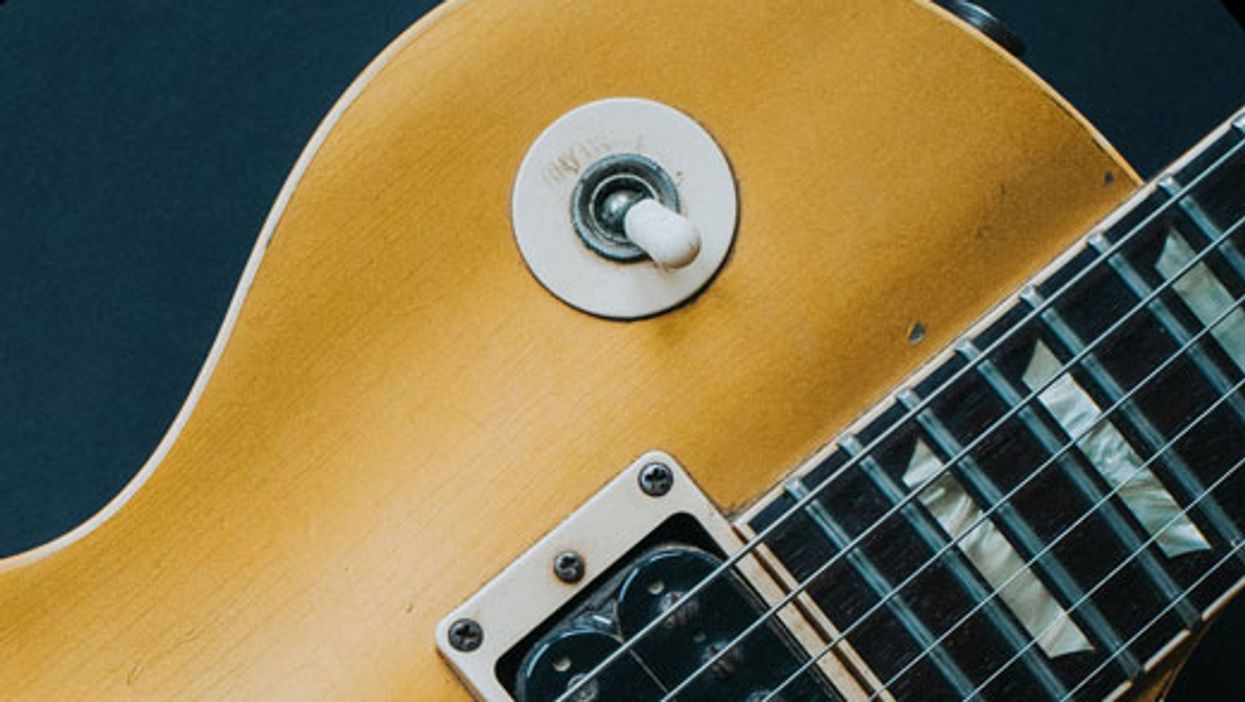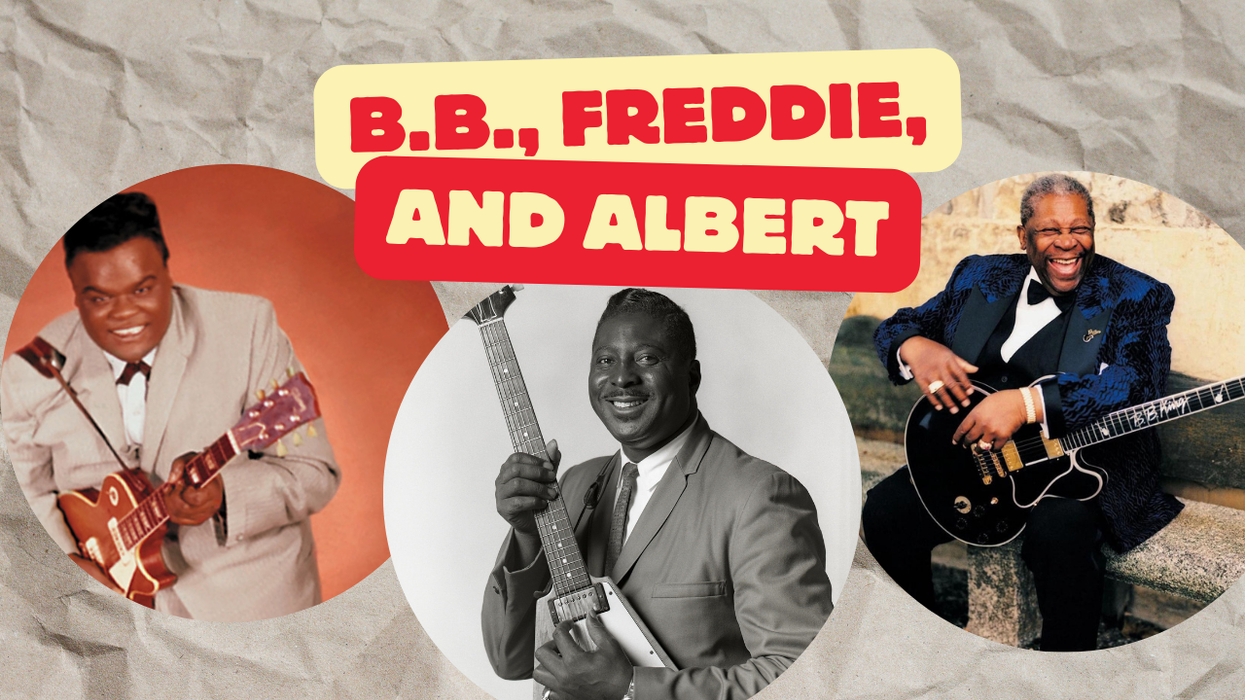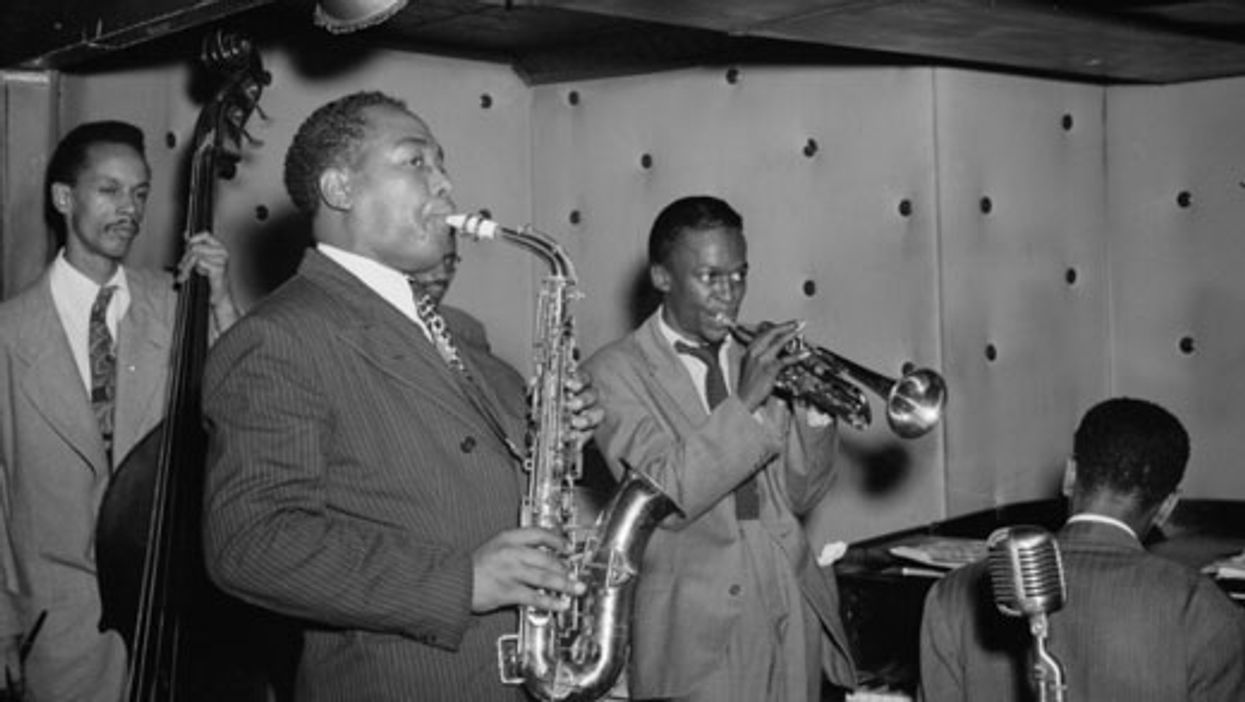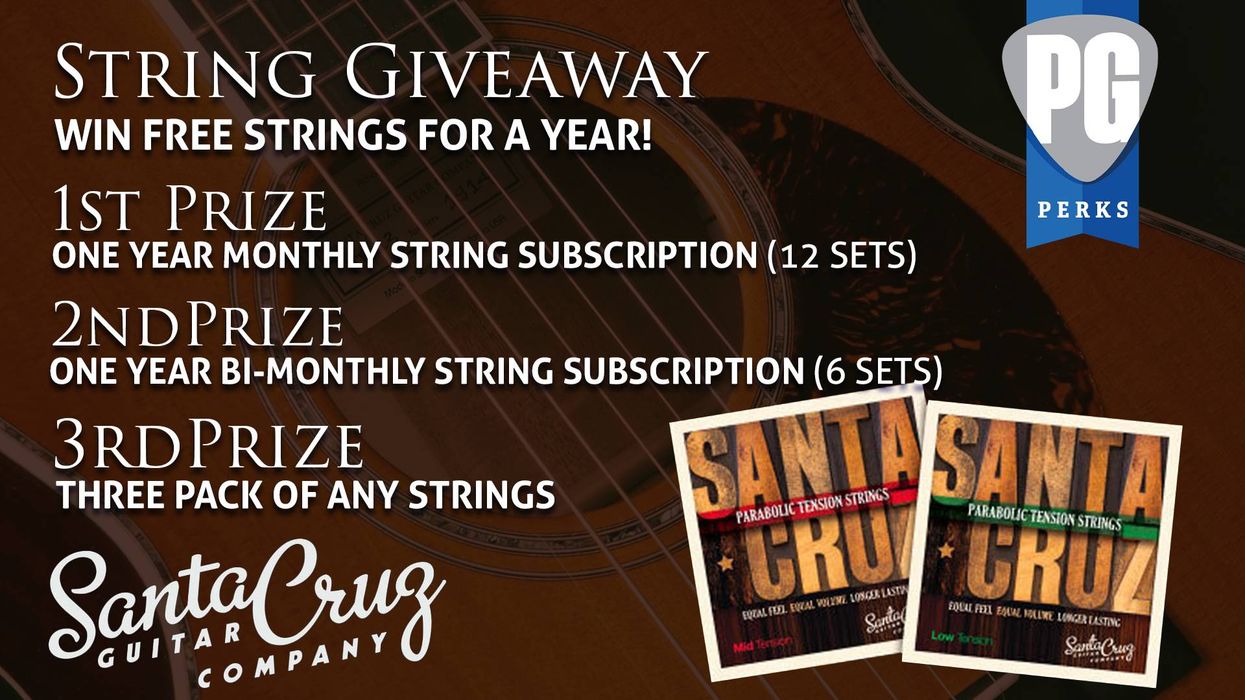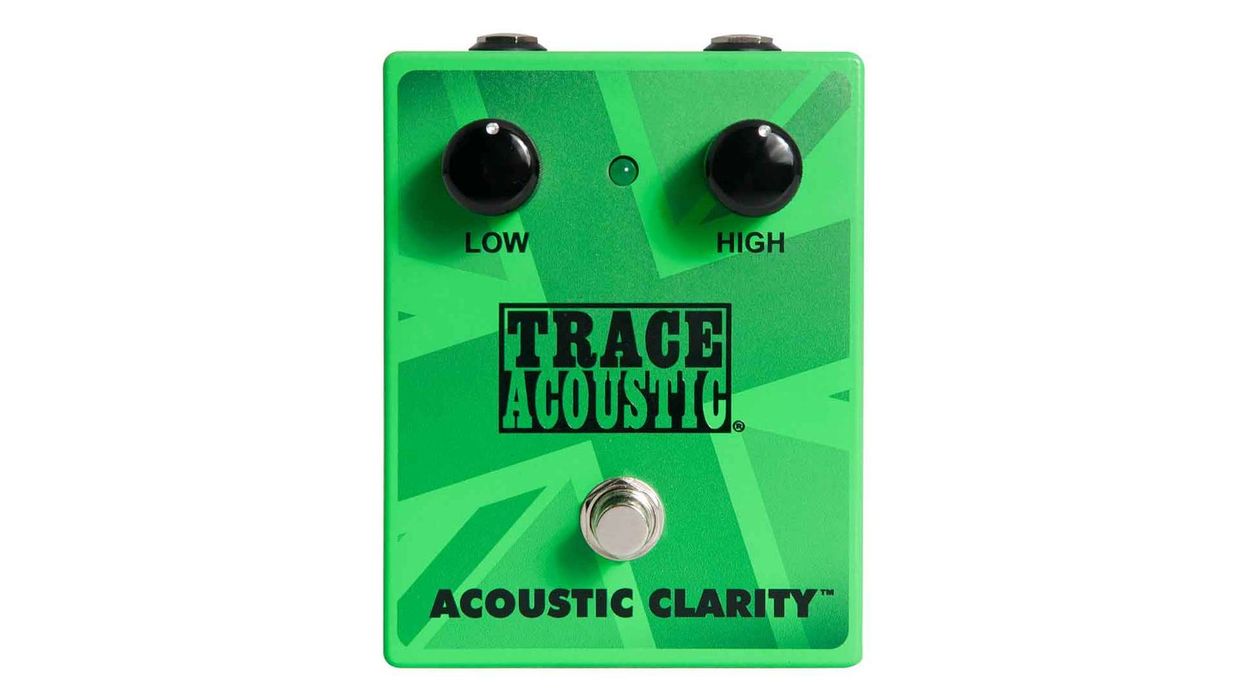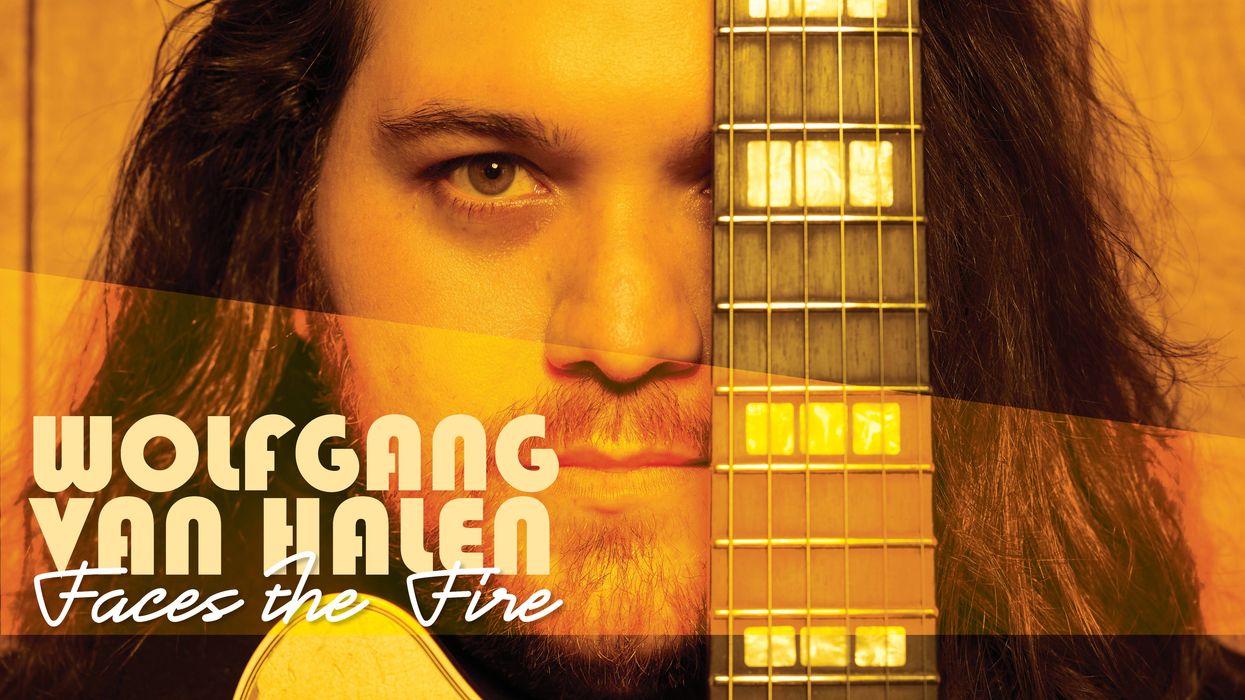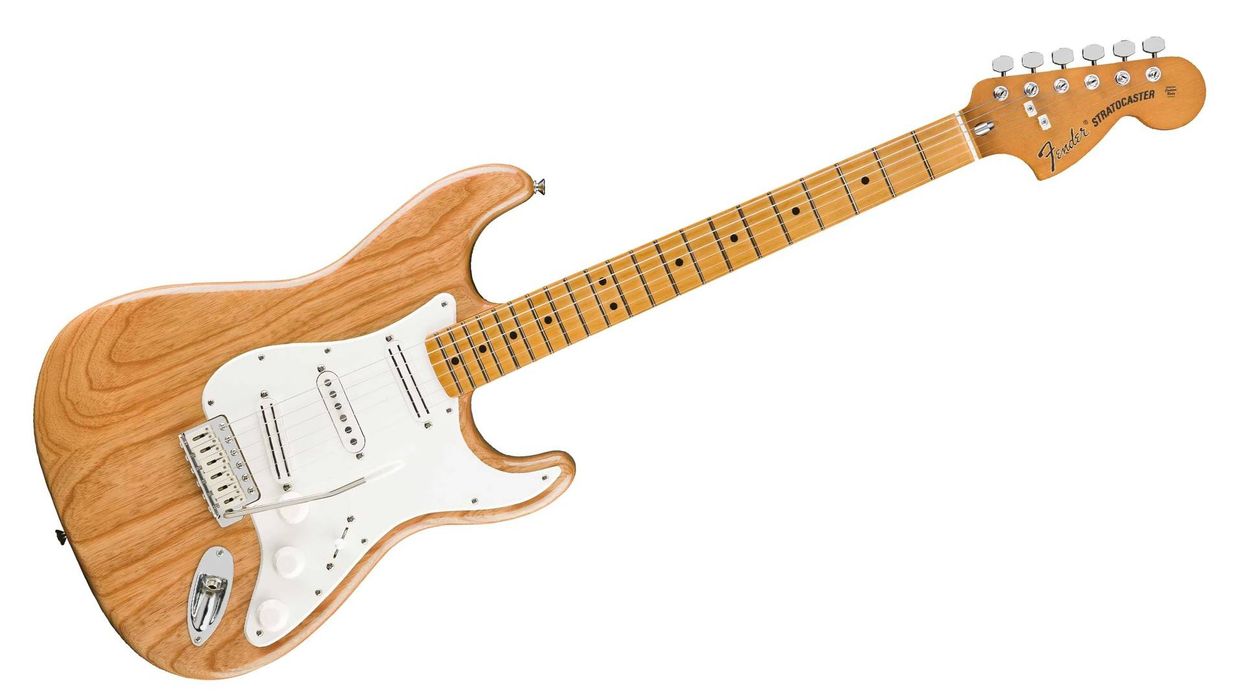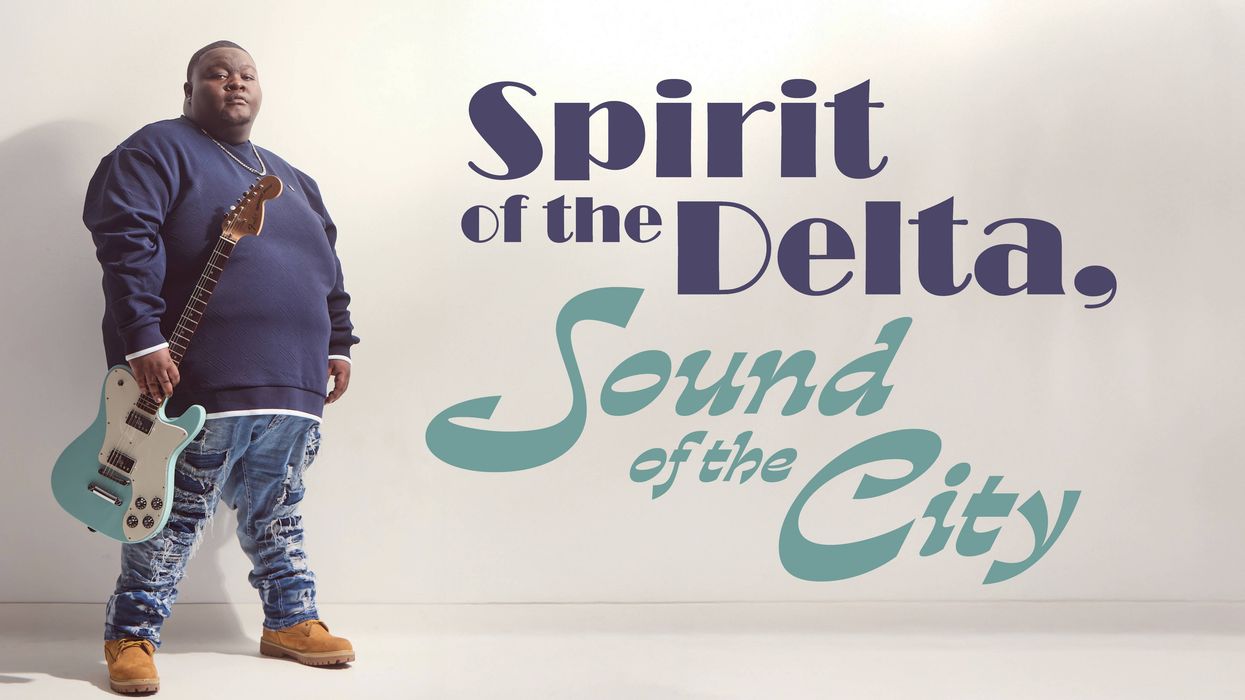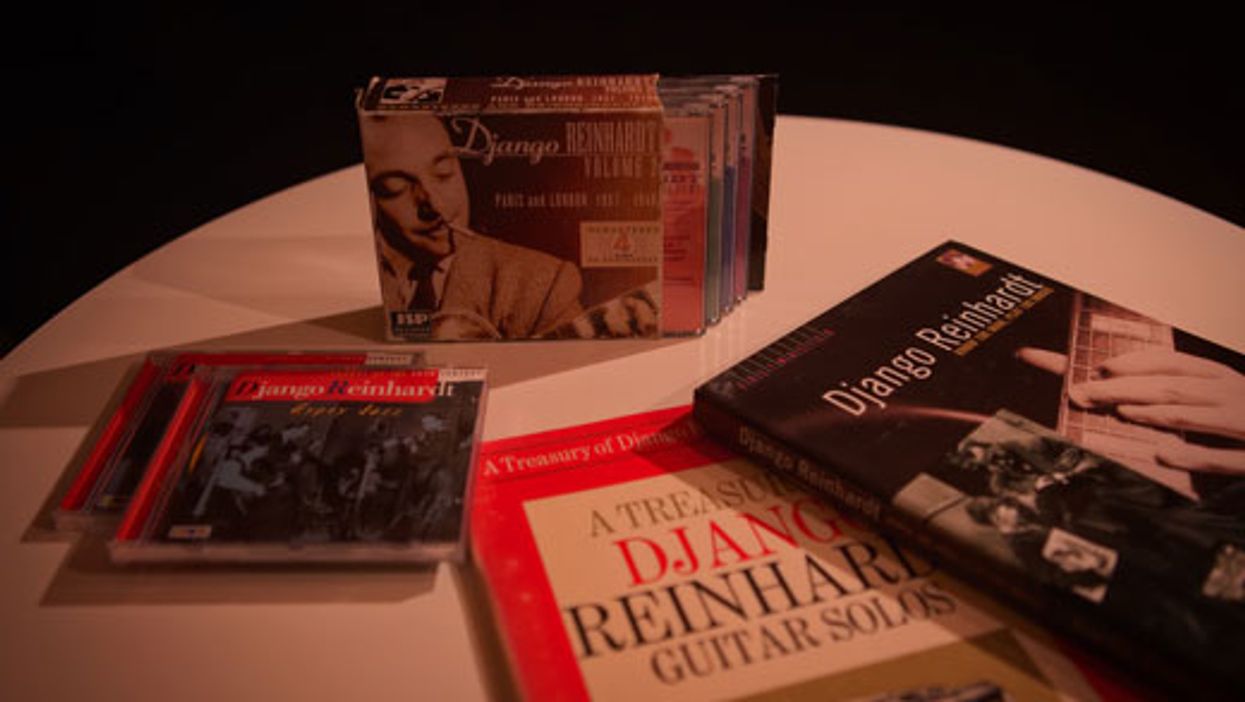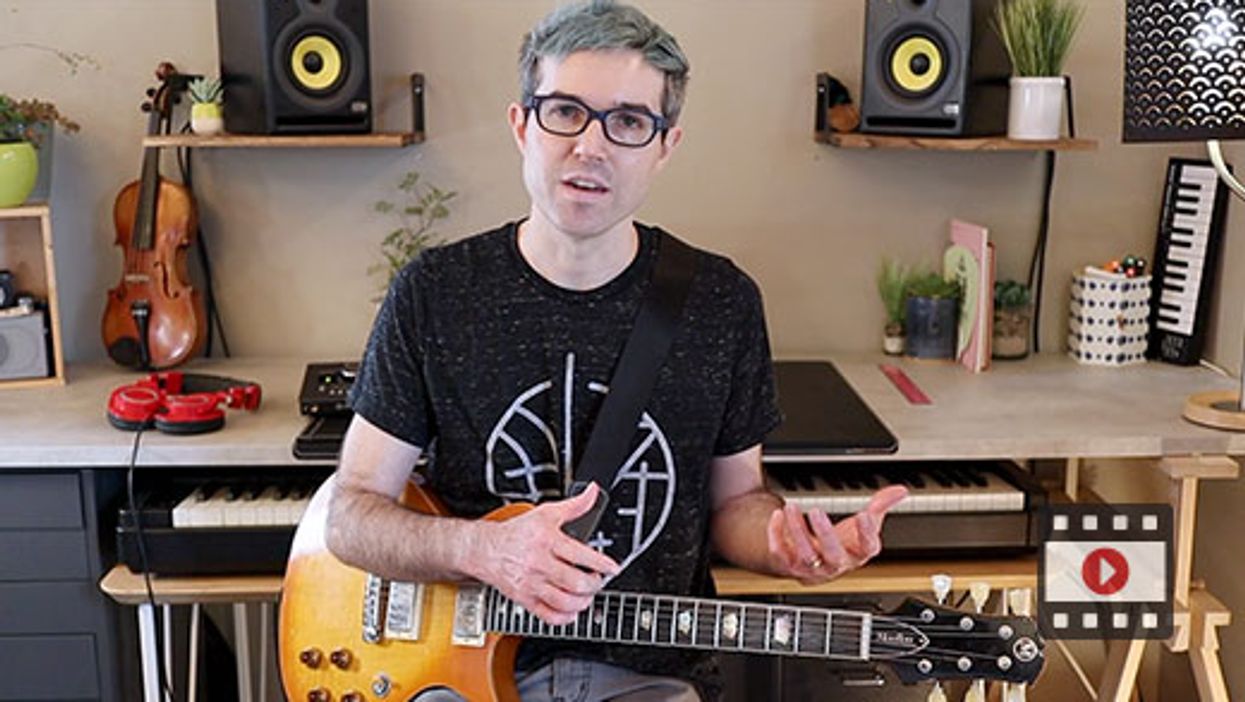Last updated on May 21, 2022
Don't get me wrong, I'm all for blues music, but the blues scale can yield beguiling musical results that bear little resemblance to the traditional blues—particularly if one looks at (and listens to) the scale from a different point of view.
Chord Creation
The idea of harmonization is relatively simple. It means is to play two or more notes together at the same time. Technically speaking, two notes performed at the same time create a dyad, not a chord. It takes three or more notes performed simultaneously to create a chord, although the one exception, the two-note so-called "power chord" in Ex. 1, skews this theory a bit.
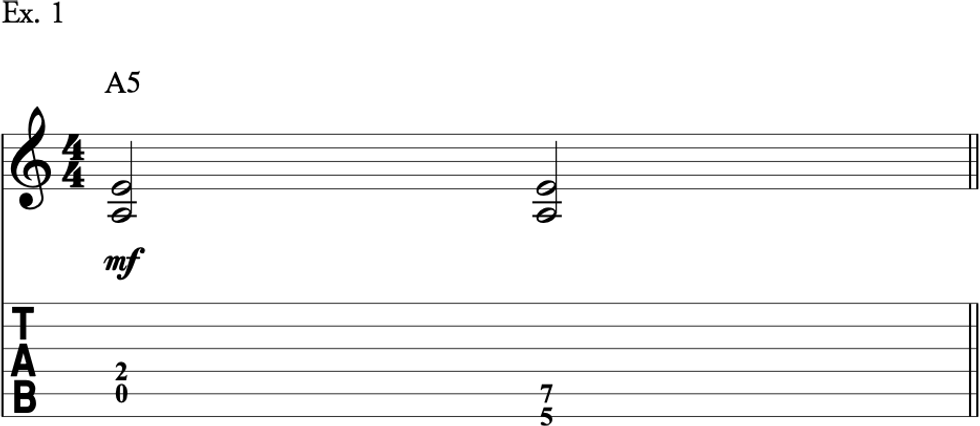
So, which two or more notes should you harmonize? Any you want! But, if you desire continuity in your compositions and playing, it's a good idea to harmonize notes from a specific scale.
Most musicians usually start with the major scale, stacking every other note of the scale on top of each other until a triad is created (Ex. 2).

From there you can start adding, or replacing notes, to create variations from these basic triads, as seen in Ex. 3.
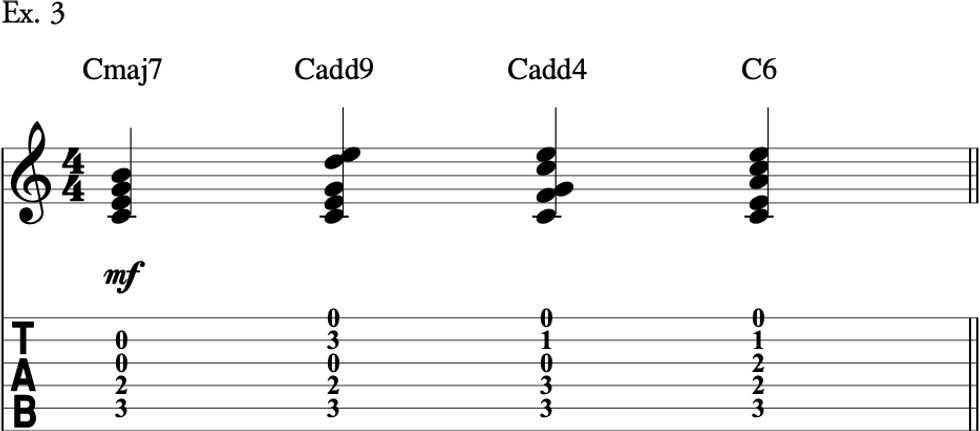
I must point out that you can also arpeggiate these chords, playing the notes one at a time (Ex. 4). Since we are emphasizing harmony in this lesson, it helps to let them ring out.
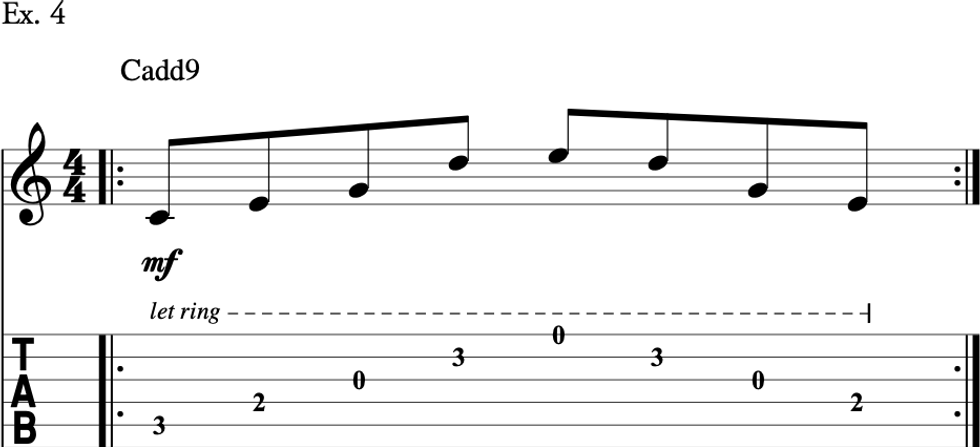
That's the most common way to create chords, but in this lesson we're looking for something unusual. So rather than being so formulaic, let's proceed with the basic idea that playing two or more notes at the same time will work as long as they all come from the blues scale.
The blues scale is just the minor pentatonic scale with one additional note, which gets labeled #4 or a b5 depending on context. Ex. 5 shows the most common "box" pattern for the A blues scale (A–C–D–Eb–E–G). After getting a hold of this scale, I recommend working on it in the key of E and D since many of the notes can be played with open strings.

There are two considerable disparities when it comes to generating chords from the blues scale as compared to the major scale. First, the blues scale only has six notes and second, the intervals between the notes in each scale are significantly different.
This means that the blues scale creates radical changes in chord construction and nomenclature, the theory of which is far beyond the scope of this lesson. For instance, Ex. 6 is a selection of relatively common chords you can generate from the A blues scale. Later on, we will get into more exotic harmonies.

For now, all you really need to understand about the theory is that, the chords, and the melodies I've composed to fit them, all come from harmonizing notes from the A blues scale.
When Theory, Intuition, and Creativity Meet
Once the concept of harmonization is understood, the possibilities are limited only by your imagination. The following examples are just a few of the endless ideas you could generate. I have designed my examples to imitate the styles of well-known composers and guitarists and broken them down into how they are fingered on the fretboard.
Ex. 7 is a particularly fun place to start as this arpeggio is just the A blues scale, but the notes are displaced into different octaves to create chords.

For Ex. 8 I've rearranged the notes ever so slightly to create a slightly more uniform, pseudo-Slayer progression and melody.
Ex. 8
The bent note at the beginning of Ex. 9 immediately made me think of Jimmy Page, so for guitar two, I mimicked Robert Plant's chromatic vocal melody on "Misty Mountain Hop" to create this Led Zeppelin-inspired etude. Note that the first chord is labeled A5(#11) because it contains the D# almost an octave and half higher than the root, making it a #11 in relationship to the A.
Ex. 9
Ex. 10 was a happy accident I discovered while playing around with this lesson's concept. It's unashamedly Nine Inch Nails meets Andy Summers. The second chord in the progression is a little tricky to label, so I went with D5(b9) as it contains Eb an octave and one half-step away from the root, making it the b9.
Ex. 10
Ex. 11 demonstrates the power of playing unexpected, three-note chords over a static bassline, very similar to funk/fusion keyboard players in the 1970s (think Herbie Hancock and Chick Corea). To provide continuity, I've actually harmonized the blues scale using the same method discussed in Ex. 2. The chord labels I've chosen are derived from a combination of the chords and the bass line, though you'll see there are really only two chords: Cm and Asus4, played with different voicings. And take my word for it, the fact that this progression contains both Cm and Am chords is highly unusual and worth more investigation.
Ex. 11
Ex. 12 Is a pseudo-power chord riff a la Fugazi or other bands found in the post-punk/emo genres. I've started here with a variation of the A5(#11) chord. Perhaps this is the defining chord of the harmonized blues scale? The rest of the progression seems to alternate between variations of Am and G, but notice that the bass is playing different notes over the chords, providing harmonic variation. Also pay attention that B and C sections are slightly different.
Ex. 12
Comprehend and Create!
I hope by now you've realized that the key to exploiting the harmonized blues scale is to include the #4/b5 in all your progressions. This is the vital element that distinguishes the blues scale from so many others. Make your own progressions, melodies, and songs based on what we've started here. You are only limited by your imagination.
